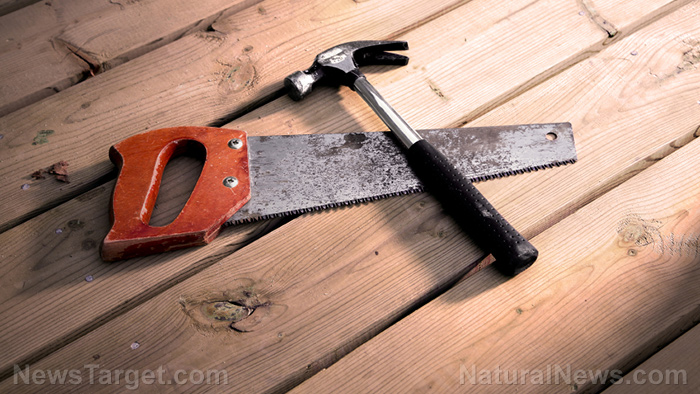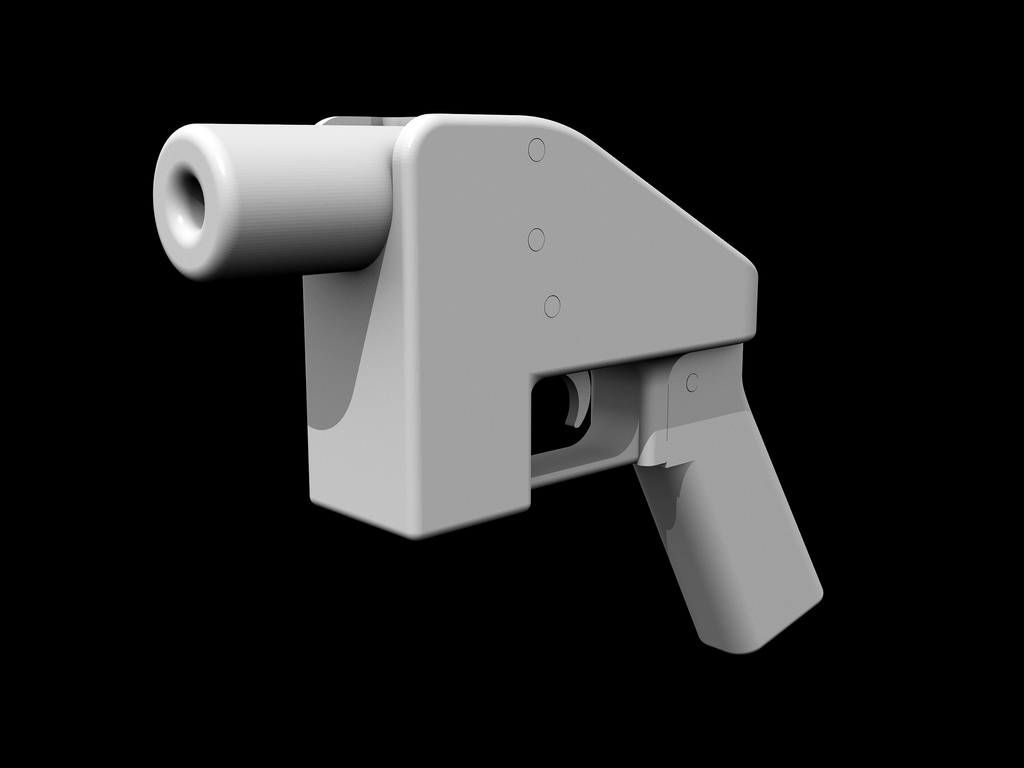Essential survival skills: How to build a lean-to shelter
10/27/2022 / By Zoey Sky

If you’re a prepper who spends a lot of time outdoors, you need to know how to stay warm and protect yourself from the elements, especially if you are forced to bug out after SHTF. Not having a shelter puts you at risk of exposure, which has claimed the lives of many people lost in the wilderness.
Your body will quickly succumb to the effects of extreme weather and temperature after only a couple of hours or even less, and one way to protect yourself is to wear weather-appropriate clothing and footwear.
Next, you should always bring some type of shelter or a tarp that can be used to construct an emergency shelter. If you don’t have a tent in your survival gear, you need to know how to make one.
Even an impromptu shelter like a lean-to can keep you warm. (h/t to SurvivalCache.com)
There are different types of outdoor shelters that you can make and all have unique advantages and disadvantages. However, there is one type that even beginners can easily build: a lean-to.
A lean-to shelter is simple, but it may save your life
A lean-to shelter is one of the simplest shelters to make because you only need simple materials and is rather easy to construct. It can also be set up rather quickly.
The basic design of a lean-to shelter consists of a single wall propped up at roughly a 45-degree angle or steeper.
The wall gives you minimum protection from wind, rain and snow. Its angle also lets water run off and keeps too much snow from accumulating.
But since a lean-to shelter has only two small sidewalls and no other walls and a true ceiling, it doesn’t retain heat that well. If you are dealing with cold conditions, a lean-to is better than nothing but this type of shelter is better suited for environments with milder temperatures.
Overall, a lean-to shelter is best used as a quick emergency shelter if you need to get out of the elements for a short time, or if you only intend to bug out somewhere for a night or two. (Related: 10 Survival skills everyone needs to know.)
Pros and cons of lean-to shelters
A lean-to shelter is easy to set up because you don’t need a lot of materials and you can easily build one using a variety of materials. You can also build a lean-to shelter almost anywhere.
On the other hand, a lean-to isn’t as useful if you are camping out in a very cold region. It also won’t protect you from wild animals.
Tips for choosing your campsite
When setting up any kind of shelter, you need to choose a good location.
Here are some of the things you should keep in mind when selecting a campsite.
Look up
Regularly looking up when choosing a spot will help you identify any “widow makers” or trees or tree branches that have a high likelihood of falling on you because of dead branches or damaged trees.
You should also look out for other falling hazards like rocks.
Avoid danger zones
Never build your lean-to or any shelter in dangerous zones like avalanche, flashflood, mudslide and rockslide zones.
Most of the time you can see visual environmental indicators that will inform you if you are in one of these zones.
These areas are more likely to experience landslides or mudflows:
- Areas where landslides have occurred before.
- Areas where wildfires or human modification of the land have destroyed vegetation.
- Steep slopes and areas at the bottom of slopes or canyons.
- Slopes altered for construction of roads or buildings.
- Channels along a stream or river.
- Areas where surface runoff is directed.
Check for wildlife
Before setting up camp, do a quick perimeter check for signs of wildlife or reasons that wildlife may want to frequent the area.
Never set up a shelter directly on or near a game trail or near a food source. You should also check for anthills, hives and insect nests.
Avoid water
While you need water to survive when SHTF, it’s never a good idea to set up a shelter right next to a water source.
Water sources, especially large ones, have a cooling effect. If you need to keep your body temperature up, having a lean-to next to a lake can make it more difficult.
Water sources also have the potential for flash floods, rising water levels and wildlife visiting them.
Building a lean-to shelter
After choosing a good location for your shelter, start collecting building materials. Gather your bedding first so you can get an idea of how big the shelter should be.
Look for leaves, grasses, or tree boughs for your bedding.
Don’t lay directly on the ground. This is uncomfortable and you will lose a lot of body heat. Instead, make a small, raised bed.
Since your lean-to is probably going to be a temporary shelter, you only need to make one big enough so you can lie down and sit up.
If you are building everything from scratch, you need three sturdy branches for the frame of the shelter. Use two branches as the supports and the third one as a crossbeam or ridge pole.
Find two support poles with a fork (Y shape) in them to make things easier for yourself.
Three basic steps to building a lean-to:
- Stick the two support poles into the ground so they stand straight up. The distance between them should be long enough that you can lie down comfortably.
- Lay the ridge pole in the forks. If the side poles don’t have a fork, use cordage to lash the ridge pole to the two poles supporting it.
- Find straight branches that can be leaned against the crossbeam at an angle. Look for as many branches as you can since they will be forming the wall. The outside of the wall needs to face the windward side because this is the direction in which the prevailing winds are blowing at you.
Waterproofing a lean-to shelter
A lean-to shelter isn’t completely waterproof since it has one side that is open, but you can make several modifications if you want to stay dry in rainy weather.
Keep the shelter out of low depressions or areas where water may collect.
Shingle the outside of the roof to help rainwater run down the outside of the shelter instead of in it. Do this by overlapping leaves, green branches, moss, large pieces of bark or any other material that can be used as roofing material. This will be easier if you have a plastic sheet or tarp.
If you have extra time and materials, shove any biomass or mud into the cracks of the frame. This will help waterproof and windproof these sections.
Staying warm in a lean-to shelter
Because of a lean-to’s simple design, it’s not the warmest shelter. Fortunately, you can do several things to stay relatively warm in one.
First, properly insulate and waterproof the shelter. This will help you stay dry and prevent the wind from whipping through it.
Next, build a fire. A large lean-to can have a fire inside it, but most emergency lean-tos aren’t going to be big enough. To stay safe, you can build a bigger fire just outside of the shelter.
Place a fire reflector or reflector wall just behind the fire so more heat will be reflected back into your shelter. These walls are quick and fairly simple to build since you only need four posts with branches placed in between them.
Lastly, if you have a Mylar emergency blanket, stretch it out to form a reflector wall around a fire. You can also hand it on the roof and walls on the interior of the shelter. Be careful with the Mylar blanket because it will melt when too close to the heat.
You can also build a long fire just outside of your shelter. The fire should provide a bit more warmth compared to a traditional campfire. A long fire can be built on the ground or you can build it in a fire trench or a trench dug into the ground.
Another option is to place hot rocks or a hot water bottle into your sleeping bag or around your sleeping area. This will provide you with several hours of warmth on a cold night.
When SHTF and you need to build a lean-to, use other natural structures in the environment so you don’t have to spend too much time building a frame shelter.
Learn how to build a sturdy lean-to so you can take shelter outdoors when disaster strikes.
Watch the video below to know how to build a survival tarp shelter.
This video is from the Cahlen channel on Brighteon.com.
More related stories:
Heat, shelter and survival: 22 Winter safety tips for preppers.
How to protect yourself from 3 waves of food and shelter seekers after TEOTWAWKI.
How to make an invisible shelter looters can’t find.
Sources include:
Submit a correction >>
Tagged Under:
bug out, DIY, how-to, lean-to shelter, off grid, preparedness, prepping, prepping skills, shelter, survival, survival gear, survival skills, temporary shelter, tips
This article may contain statements that reflect the opinion of the author
RECENT NEWS & ARTICLES
COPYRIGHT © 2017 GEAR.NEWS
All content posted on this site is protected under Free Speech. Gear.news is not responsible for content written by contributing authors. The information on this site is provided for educational and entertainment purposes only. It is not intended as a substitute for professional advice of any kind. Gear.news assumes no responsibility for the use or misuse of this material. All trademarks, registered trademarks and service marks mentioned on this site are the property of their respective owners.




















